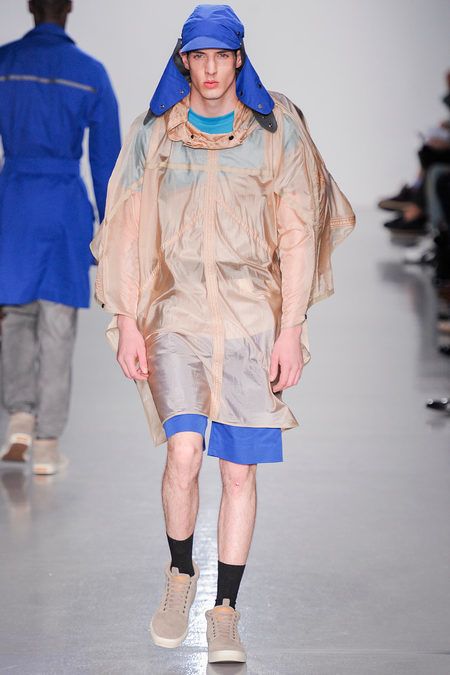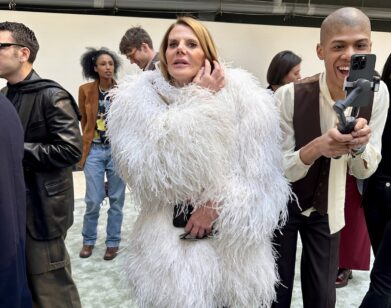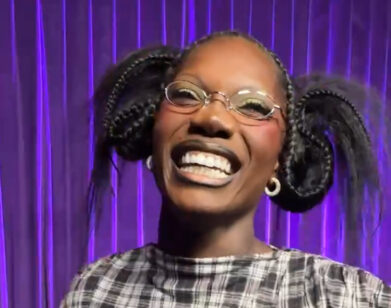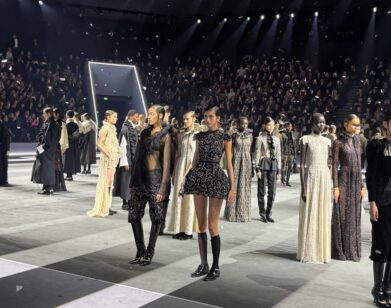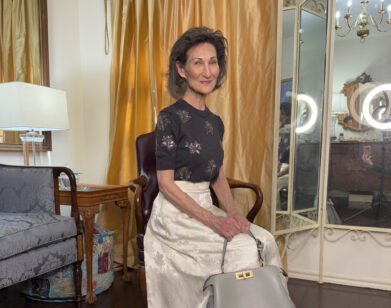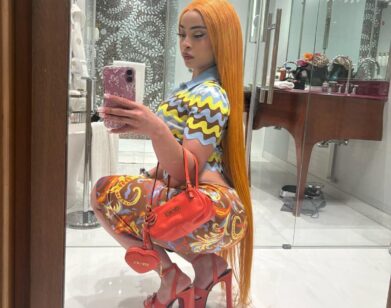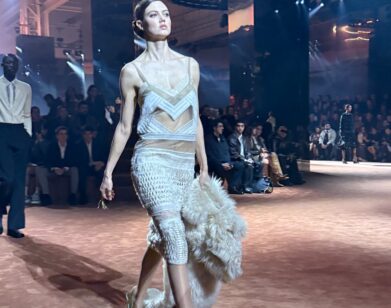Menswear Monday: Christopher Raeburn
There’s more to menswear than suits and ties. Every other Monday, we’re giving the fastest developing facet of fashion the attention it deserves and introducing the designers, buyers, trendsetters, and stylists you need to know.
Christopher Raeburn’s namesake men’s collection has been showing in London for only three seasons now, and he’s already released more than twice as many collaborations. His partners range from the high-end, as in Moncler and Mr. Porter, to high street, as in Fred Perry, to straightforward sportswear like Victorinox, where he was appointed Artistic Director in January. “I firmly believe that if you’re going out with the right sort of values,” he proffers, “collaboration is really important.”
Raeburn does not lack for values. Collaborations aside, he’s built his own brand on an impressive commitment to sustainability, sourcing many of his fabrics from vintage military dead stock or historic UK mills, though he is reluctant to say that he designs “sustainable fashion.” Understandably so: the term tends to conjure images of art school projects and Project Runway challenges. The associations are not so fashionable. Raeburn’s range of parkas, bombers, and other army-inspired sportswear, on the other hand, have won a lot of fashionable fans. This might make his clothes more sustainable than any well-intentioned trashion experiment: having tripled his menswear wholesale in just the last year, Raeburn’s are designs that people increasingly want to wear.
We caught up with the designer, who now splits his time between London and New York, to talk about the future of his line and the future of menswear at large (and how they might be intertwined).
DESIGNER: Christopher Raeburn
SHOWING IN: London
MORE THAN SPORTSWEAR: It’s not just sportswear, it’s more about functionality. It’s about making things that work properly. I think obviously in sportswear, there’s such a drive on technology and on new fabrications and new ways of doing things, like with the military and other expensive technologies. I take an interest in all of those things, simply because they’re pushing things forward. But then as I look across my business as a whole, it’s about how that mixes with some more traditional fabrics and shapes as well. So while we’ll be working with Japanese recycled fabrics or breathables or what have you, we’ll also be working with Hainsworth wool, and they’re one of the oldest British mills, and we work with Halley Stevensons in waxed fabrics. I think that’s part of the uniqueness of working in London, is that you’re surrounded by so much heritage but so much newness and modernity as well. It’s a super inspiring place to be.
STRAIGHT TO THE SOURCE: Our sourcing can be from some of the more traditional techniques, where we’ll be going to Première Vision in Paris or doing some of the fabric fairs here in the UK, but then with reusing fabrics, it’s everything from finding single pieces on eBay to going to military warehouses and buying from the Ministry of Defence. It’s a constant operation—all kinds of flea markets in Paris or Tokyo or New York or wherever I am. Sometimes we’re reusing fabrics, and sometimes we’re then working with factories to replicate old fabrics as well that maybe we can no longer buy anymore. So it’s quite a holistic approach where some of the inspirations and original fabrics can really come from a very wide range of areas. Definitely not the traditional way of putting together a collection. [laughs]
STYLE ICONS: I think of icons and adventurers that I’ve read about. Some of the mountaineers, Chris Bonington, he’s one of ours from the UK, and Sir Ranulph Fienne—of course, he’s still doing expeditions now—and then even David Sterling back in the formation of an SAS [Special Air Service]. They’re all really, really amazing characters. You know, I once went to a talk that Sir David Attenborough did as part of an awards ceremony that he did two or three years ago, where he spoke essentially about documenting 50 years of a disappearing world, and the talk was in London but it was about the work that he had been doing globally around the environment. You look at this band of people, and it’s just amazing. I’d choose all of them. That’s slightly schizophrenic. [laughs]
LOOKING GOOD VS. DOING GOOD: I think it’s a real combination, to be honest, because, on the one hand, I love the fabrics first, and I love that fact that even if you wanted to buy that fabric on a roll, invariably you couldn’t. And yet the inherent thing with the military is that they have to overproduce, and so there are be fabrics that might be made into jackets or other items—they’re 50 or 60 years old but they’ve never been used. But then within it, there’s the functionality of the fabrics themselves, which I really love. And then the aesthetic that comes with that, I think they’re all sort of linked together. And finally I think there’s another thing where it just makes good sense. Why would you not want to reuse something if you could? You put all of those things together and it’s sort of a rolling ball of creativity.
FUTURE OF MENSWEAR: I think that obviously it’s widely acknowledged that in terms of trends, things are becoming more casual, but I’m really proud of the amount of detail and the heritage in the fabrics that we work with. Our customers are really interested in the provenance of the fabrics and where things are made and all of these things as well. So hopefully the future of menswear is a sort of a continuation of what we’ve always done well in terms of the detail and the quality in the make of the garments, but then also really layering in all of these other stories. It’s super exciting, because on the one hand, we work a lot with the idea of archaeology where you’re researching original fabrics and details and shapes, but then you’ve got so much now happening in terms of technology as well, with new fabrics and sustainability and such. I’m pretty excited.
Menswear Monday runs every other Monday. For more, click here.

